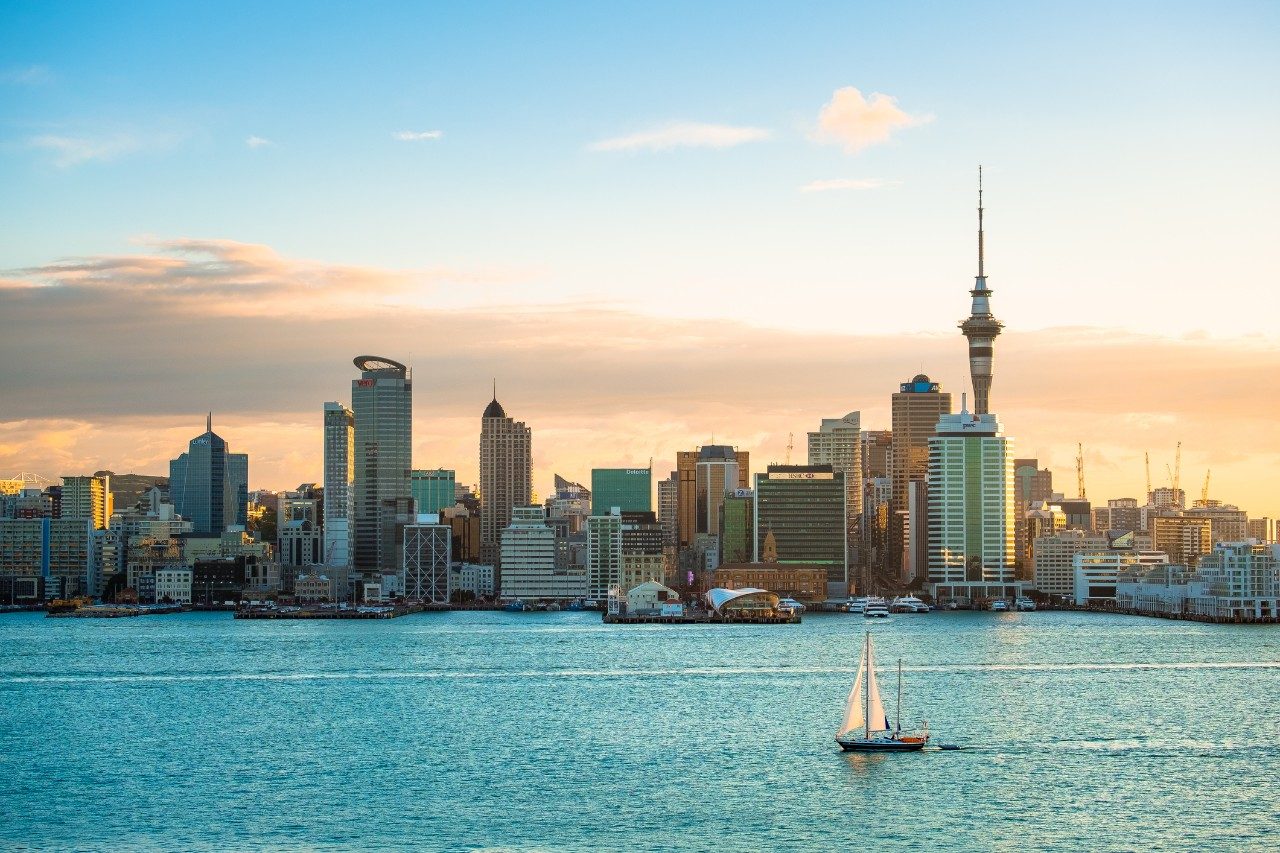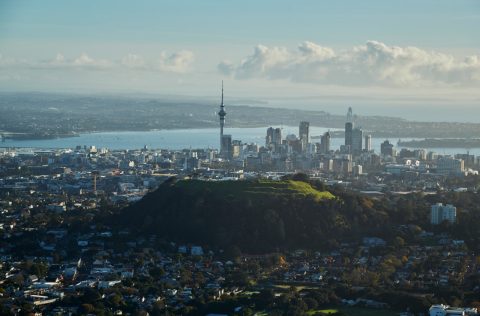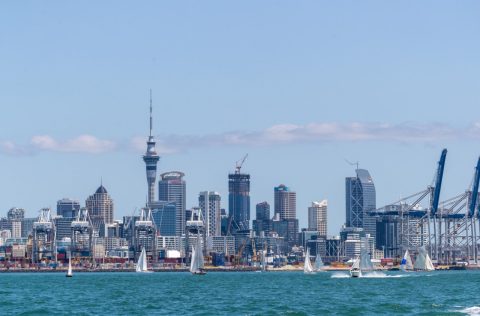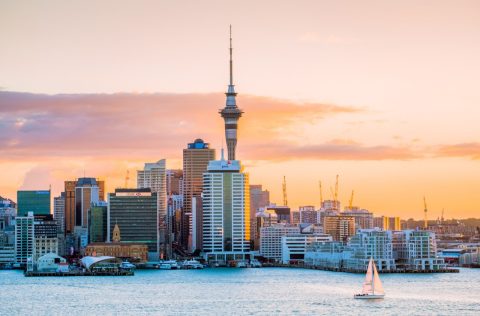Read Before You Leave – Auckland

Australians often forget New Zealand is a different country, arriving at the airport without our passports as if we’re heading to the eighth Australian state. Admittedly, the two southern nations happily share some history, geographic proximity and a tongue-in-cheek rivalry but there are significant differences too, and not just in how we pronounce our vowels. Here’s what to know before you visit our Kiwi neighbours.
Flight time

Qantas flies directly to Auckland from Brisbane, Sydney and Melbourne and the trip takes between three and three-and-a-half hours.
Entering New Zealand
Australians don’t need a visa to enter New Zealand or to stay indefinitely, but we can assure you that despite the brief three-hour flight, a passport will be required! For the latest information on entry and exit to and from New Zealand, go to Smart Traveller.
If you are not a New Zealand or Australian citizen, you may need to apply for a visa or a New Zealand Electronic Travel Authority (NZeTA) for travelling to or transiting New Zealand.
All passengers entering New Zealand have the option to complete a New Zealand Traveller Declaration instead of a paper Passenger Arrival Card. Passengers transiting internationally do not need to complete a declaration.
Flying in to Auckland Airport
Auckland Airport is New Zealand’s largest, located 21 kilometres south of the city centre. For a seamless journey, pre-book a Super Shuttle – you’ll get an upfront cost estimate for dropping you to and from your accommodation’s doorstep – and head to the recently opened transport hub to get your holiday started. Taxis are also available at the hub.
Vaccine advice
Vaccinations are generally unnecessary for Australians travelling to New Zealand – the risk of contracting a disease is about the same in both countries. Just ensure that your routine vaccinations are up to date.
Transport tips
Buses, trains and ferries, all run by Auckland Transport, link Auckland. The AT Hop card is a reusable, prepaid card that works on all three modes of transport. Purchase the card for $NZ10 at Auckland Transport customer service centres and various retailers. Go to Auckland Transport to plan your journey.
Driving
No international driver’s license is required for Australians driving in New Zealand. As in Australia, New Zealanders drive on the left-hand side of the road; driver and passengers must wear a seatbelt; and the blood-alcohol limit is .05 per cent – for those aged 20 and younger, it’s zero. Travel insurance is recomended for all travellers.
Money matters
At the time of writing, the Australian dollar was buying around NZD$1.08. Check a reliable currency conversion service for up-to-date foreign-exchange rates.
Check with your bank that you won’t be hit with extra fees when using your credit card in Auckland. Your Australian bank and New Zealand ATMs will each charge you for withdrawing money from your debit card, too, so it might be worth organising a travel card (most banks have one) with low or no fees to use while you’re away.
In any case, inform your bank of your travel plans, lest overseas purchases are misconstrued as fraud and your card is cancelled.
Tipping in New Zealand is similar to Australia. Restaurant workers are paid a fair minimum wage so diners aren’t obligated to leave a tip but a gratuity for good service will be appreciated. It’s not customary to tip taxi drivers but do tip hotel staff NZ$2-5 for each bag carried to your room and a leave a few dollars for the workers who clean your hotel room.
Weather wise

The North Island has similar temperatures to the southern areas of Australia. Auckland has warm, humid summers and mild winters. Summer offers the most pleasant weather with spring and autumn are also excellent times to visit, weatherwise.
When to go
Summer offers warm, sunny days, but also the most local and international tourists (Australia and New Zealand also share a very similar school holiday schedule). Spring and autumn have great weather for hiking up local maunga (mountains) or exploring the dramatic black-sand beaches of the west coast, and in autumn the colours on nearby islands such as Waiheke are stunning.
Dress code
Auckland is easy for Australians: Kiwis know what a flat white is, they won’t look askance at your thongs (though they will call them jandals) and they drive on the right (as in, correct) side of the road.
Similarly, the laid-back dress code makes it easy to pack for a trip to Auckland. Just ensure you bring layers for temperamental conditions, comfy shoes for walking and layers for changeable weather. The sun is strong in New Zealand, so be sure to pack sunglasses and sunscreen.
Tap water
The tap water is drinkable in Auckland and meets all the requirements of the New Zealand Drinking Water Standards.
Insurance policy
Australians can access New Zealand’s public health system thanks to a reciprocal healthcare agreement. Travel insurance is still necessary for some treatments and medication, not to mention expenses if medical evacuation is required. Remember to bring your Medicare card with you to New Zealand – you’ll need the card and your passport to access public medical care.
Good to know
- The legal drinking age in New Zealand is 18.
- Gay marriage is legal in New Zealand.
- Disciplining children through corporal punishment (ie, smacking) is illegal.
Where to stay
Greater Auckland is divided into four separate areas linked by a motorway network: Auckland, Manukau, North Shore and Waitakere. Auckland is home to the CBD and hip inner-city suburbs including Parnell, Ponsonby, and Newmarket. For a more relaxed coastal stay, consider the character-filled areas of Devonport and Takapuna, or escape the buzz in rural Matakana, a 60-minutes drive north. For the ultimate daytrip, Waiheke Island’s world-class wineries and epic hiking trails are a quick 35-minute ferry ride away from the city centre.
Phone calls and mobile data
Check your mobile service carrier’s international roaming rates prior to your trip. If they’re not affordable, disable data roaming before you land and don’t answer incoming calls on your mobile phone if you want to keep your monthly bill in check. Invest in a prepaid travel SIM card if keeping in touch with home is important.
If you need to make calls in New Zealand buy a NZ SIM card for local calls and mobile data. Remember, this will only work if your phone is not locked to your Australian carrier. Also note that Australian mobile phones operate on a GSM network.
Phone home
To call Australia, dial +61 followed by the phone number – including the area code minus the zero. So, to call a Sydney landline telephone, you would dial +61 2 then the phone number. To call a mobile phone, use the same country code and dial the mobile number minus the first zero.
Gadgets
Power sockets in NZ have the same voltage and frequency as Australian ones, as well as the same power sockets so all your gadgets will work without any adaptors necessary.
Handy apps and websites
Discover Auckland for upcoming events and festivals
Auckland Transport for planning your route on public transport.
Uber an alternative option to public transport.
Smart Traveller for travel information.
XE for currency conversion.
Auckland Airport for information on flights, weather, traffic, parking, terminal locations and airport shuttles.
Walk Auckland for more than 20 different walking tours of the city packed with information on the sights.
Where Next knows where you are, what the weather is like and what time it is: tap the button and allow it to suggest what you should do next.
Maplets allows users to download and customise maps to make getting around offline a cinch.

Start planning now
SEE ALSO: The Best Wildlife Lodges in New Zealand


